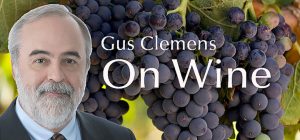Wine makers recognized climate change years ago. Many vine growers have meticulous records dating back a hundred years. For them, global warming is not speculation, it is real and their livelihoods depend on responding to it.
When temperatures increase, alcohol-by-volume increases. Red wines that were 12% ABV 30 years ago today are 13.5% to 15% in Bordeaux. Viticulturists called for change in Bordeaux’s very strict grape rules a decade ago. Research was initiated. Rules were modified.
Bernard Farges, president of the Bordeaux Wine Council, noted: “Vignerons were worried. They felt that if nothing was done, in 40 years Bordeaux as we know it would not exist. It would be too alcoholic and not typical.”
In January 2021, the Institut National de l’Origine et de la Qualité—the controlling organization—formally approved four new red and two new white grapes for Bordeaux. The reds: arinarnoa (tannat-cabernet sauvignon cross), castets (obscure Bordeaux variety), marselen (cabernet sauvignon-grenache cross), and touriga nacional. The whites: alvarinho and liliorila (chardonnay-baroque cross). You likely recognize touriga nacional, red wine of Portugal, and alvarinho, key grape in northern Portugal and northwestern Spain, found in vinho verde in addition to bottling as a varietal.
All tolerate warm weather. The vines are limited to 5% of a grower’s vineyard, and the wine cannot exceed 10% of a wine blend. Since regulations prohibit naming grapes on a Bordeaux label if they are less than 15% of a blend, you will not see the varieties on Bordeaux labels.
“I am confident that even if these varieties don’t work, we will continue to experiment. We need to do something before it is too late,” Farges said.
Merlot and sauvignon blanc are most at risk. Harvesting of these grapes now occurs in August. Historically, those grapes were harvested between September 10 and October 10. According to research, by 2050 the two grapes, as they exist now, will be useless in Bordeaux.
The climate is changing, and one of the world’s bedrock wine regions must change with it.
Tasting notes:
• Château Ségonzac Les Vieilles Vignes-Vignes, Blaye Côtes de Bordeaux 2015: Flaunts rich, dark fruits. Impressively over-delivers at price point. $18-20 Link to my review
• Château Malescasse Haut-Médoc 2017: Muscular, assertive, evolves to be rounder and less insistent. Bordeaux blend. $27-30 Link to my review
• Château Lassègue Saint Émilion Grand Cru 2011: Seriously assertive right-bank Bordeaux blend. $59-70 Link to my review
Last round: I do not wear glasses anymore. I have seen enough. I still drink glasses of wine, however.

